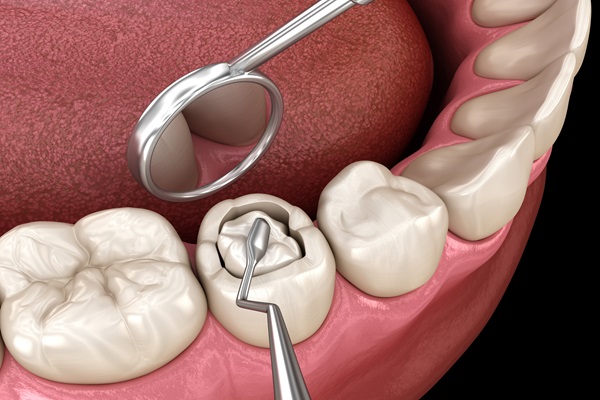Missing Teeth? A Full Mouth Reconstruction Replaces Teeth to Support Proper Mouth Functioning

Patients who suffer from improper mouth function may find a solution with a full mouth reconstruction. Those who have lost multiple teeth have several possible options for restoring their ability to chew and speak normally.
When is a full mouth reconstruction recommended?
For people with missing teeth, the remaining teeth begin to move into the gap over time. This repositioning can affect bite function. Those with broken or badly worn teeth can also develop changes in their bite. These bite imbalances can cause the enamel to wear, as well as a number of other problems, such as temporomandibular joint disorder (TMJ). Missing teeth can also cause a decrease in jawbone density, leading to changes in the shape of the face.
What is involved in a full mouth reconstruction?
The reconstruction process involves replacing or restoring many or all of the teeth. To begin, a dentist closely examines the health of the teeth. The initial exam typically includes X-rays of the teeth and jaw, as well as teeth impressions. The dentist also conducts a thorough examination of the gums to determine if they are healthy. If the patient has a disease of the gums such as periodontitis, a full reconstruction may not be possible until the condition is successfully treated.
The course of action, which may require a team of dental experts, can involve one or more procedures:
Full or partial dentures
Depending on the health of the teeth, full or partial dentures may be recommended. This procedure can take the route of traditional dentures or implant-supported dentures.
Dental bridges
A dental bridge replaces one or several missing teeth with dental crowns placed on the natural teeth located on both sides of the gap. The prosthetic tooth or teeth are cemented between the natural teeth. The new replacement can also be bonded to dental implants or to the backs of the natural teeth with metal or porcelain wings.
Dental bonding
Also referred to as composite restoration, dental bonding is a procedure designed to close spaces between the teeth. The dentist applies a moldable and durable composite resin to the teeth framing the gap and shapes it to match the other teeth.
Dental implants
A dental implant is a fixture placed into the jawbone that acts as a replacement for the missing tooth's root. It fuses with the bone over the span of a few months. This artificial root holds the replacement tooth or bridge.
Dental crowns
A dental crown is typically made of porcelain or ceramic material that provides a protective layer to protect and improve the strength of the tooth.
Conclusion
A full mouth reconstruction can follow different paths and involve multiple steps, depending on the patient's situation. The procedure can take several months to complete as well. The advantages of dental reconstruction, however, are well worth the effort in the end. Those who suffer from a limited diet, jaw or head pain, or speech impediments due to a bite imbalance can find relief from their discomfort and pain through proper dental procedures.
Are you considering a full mouth reconstruction in the Maitland area? Get more information at https://www.emergencydentistinorlando.com.
Check out what others are saying about our services on Yelp: Read our Yelp reviews.
Related Posts
The lifespan of a dental filling is limited. Due to normal wear and tear, a replacement may be necessary. When a filling deteriorates or comes loose, your tooth loses the protection that it has against injury and decay and will be more vulnerable to dangerous bacteria. To avoid more dental issues in the future, you…
A dental crown can save a tooth that is in danger of extraction. Dental crowns serve a dual purpose. They reinforce the tooth structure and improve the appearance of the smile at the same time. This means that a dentist could recommend a crown as a treatment for tooth decay or injury. A cosmetic dentist…
The time and effort that go into fitting a dental crown suggest a permanent restoration. Maybe it is the fact that installing a dental crown often requires multiple dentist visits. It could be the permanence that comes with the removal of enamel before the placement of a crown. Dental crowns that sit on dental implants…
A dental crown is a versatile restoration that can be used to address a wide range of dental issues like a cracked, chipped, decayed, deformed, or broken tooth. The crown covers up the part of the tooth that is visible above the gums, protecting it from further damage and acids made by oral bacteria.The severity…


